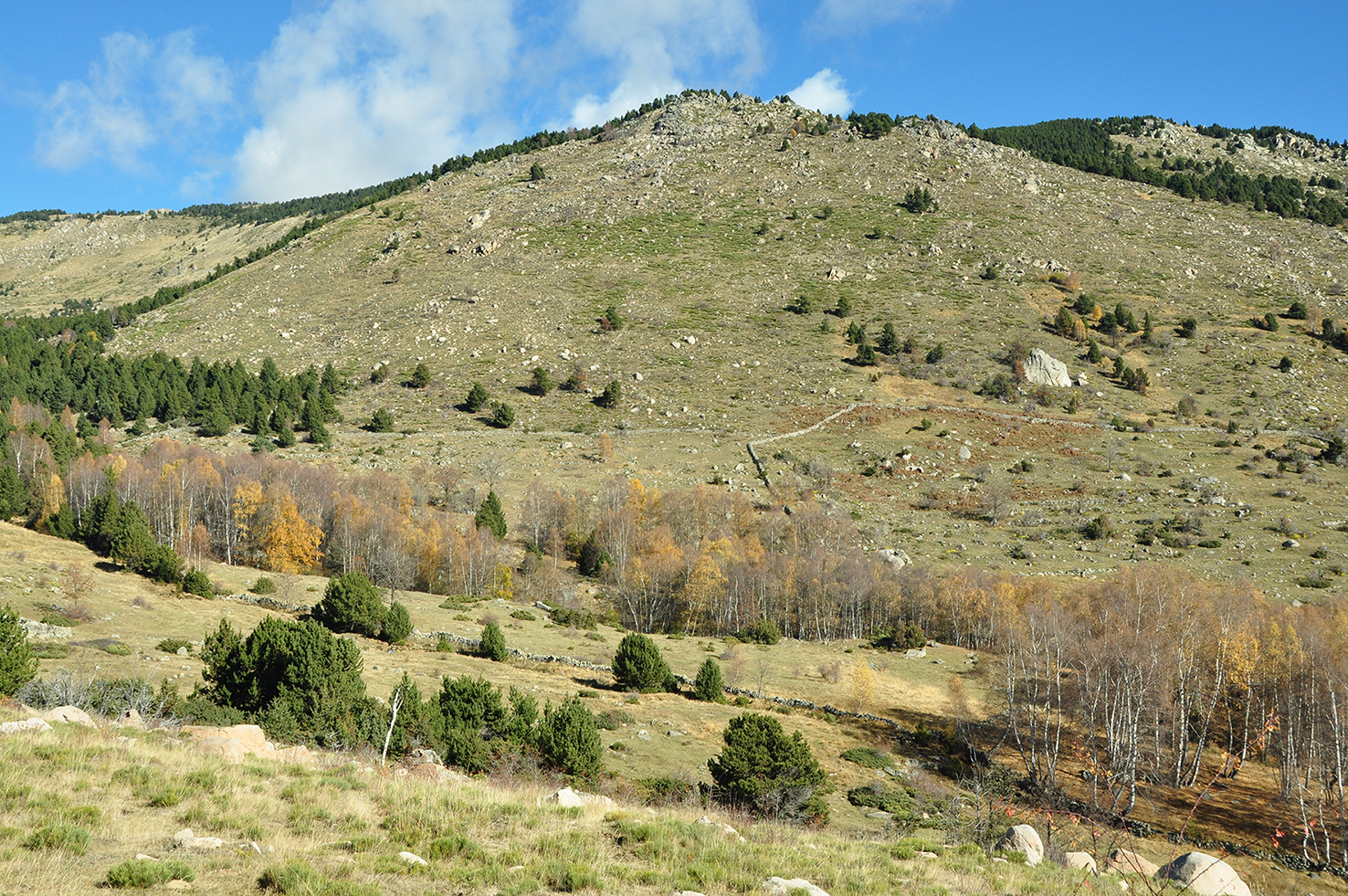
© Jean-Paul Métailié, nov. 2015
As elsewhere in European Mountains, controlled fire played a crucial role in the long-term history of the Mountain grazing area of Enveitg (1600-2600 m asl) and the establishment of the pastoral open landscape.
Enveitg is a study window located at the heart of the French Eastern Pyrenees. In this area, pastoralism developed very early (Neolithic) and is still maintained today against hard global context: rural depopulation, land abandoned, rewilding, climate change, etc. Today, Eastern Pyrenees offer vast wildlands under the influence of mountain and Mediterranean climates with social functions that are added to the ancestral pastoral, agricultural and forestry uses such as hunting, tourism, taking into account environmental and heritage expectations.
Controlled fire is a practice of maintenance and regeneration of high-altitude pastures, carried out generally during the winter period. It consists of burning plant species not consumed by livestock and progressively invade the pastures, diminishing the resources available to the herds and making the landscape more common. This tool is currently used mainly in non-mechanizable areas, with the aim of creating and maintaining fuel breaks (firebreaks) and good pastoral areas. It is also used to promote related floristic diversity and to train firefighting services. This practice and related pastoral landscape constitute the living rural heritage of this IRIS study area.
Traditionally carried out by farmers, these techniques are now mainly implemented by fire professionals. The evolution of agricultural practices has led to a generalized overgrowth, on extensively managed surfaces or those being abandoned.
Thus, the traditional use of fire is adapted to meet the new social demands on these environments.